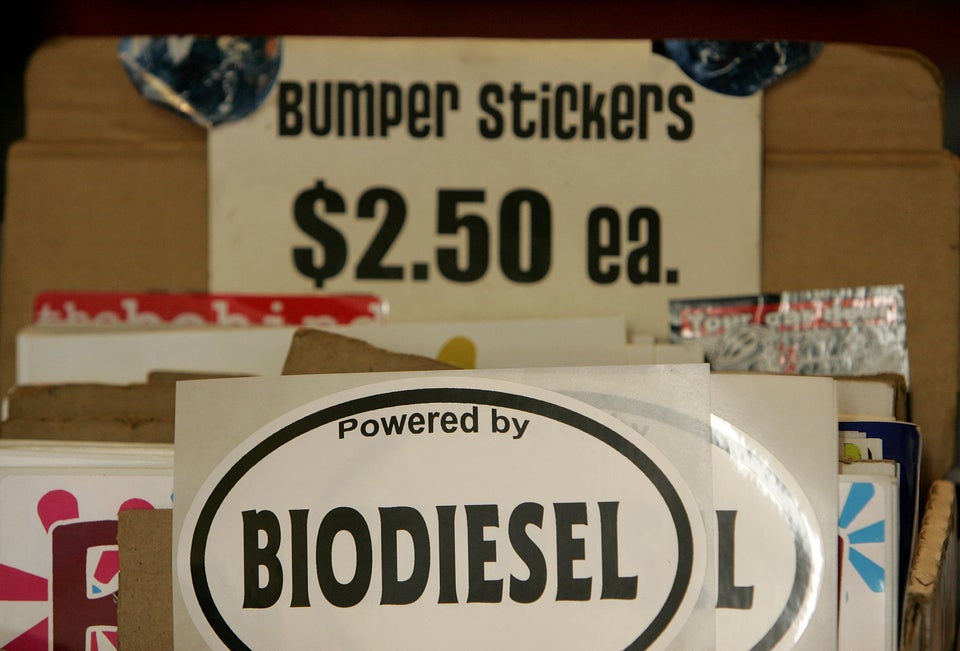By Ayesha Rascoe
WASHINGTON, Aug 6 (Reuters) - The Obama administration said
on Tuesday it would lower the target for how much renewable
fuel, such as corn-based ethanol, would needed to be blended
into gasoline in the United States in 2014, a move that could
give oil refiners some relief on compliance costs.
The Environmental Protection Agency also gave refiners more
time to meet renewable fuel quotas in 2013.
The Renewable Fuel Standard, passed by Congress and
administered by the EPA, calls for increasing each year the
amount of renewable fuel that is used in the United States until
2022.
Last updated in 2007, the RFS has faced increasing scrutiny
from lawmakers and others as the nation approaches the so-called
blend wall - the point at which the mandate will require the use
of more ethanol than can be blended into the fuel supply at 10
percent per gallon, the current standard.
Targets are rising - from a projected 18.15 billion gallons
in 2014 to 36 billion gallons in 2022. EPA on Tuesday said the
blend wall would be hit in 2014.
Just how much of a reprieve fuel markets will receive
remains unclear. Details of the EPA's proposed 2014 targets are
due some time in September. The overall goal for 2013 was left
unchanged.
Several refiners have recently cited the renewable fuel
mandate as a drag on earnings. They have warned that rising
targets for renewable fuel use is occurring at a time when U.S.
gasoline usage is falling and could lead to shortages and higher
prices at the pump for consumers.
If the renewable fuel targets keep increasing and gasoline
use falling, refiners could eventually be required to blend more
than 10 percent ethanol into gasoline, something they are
reluctant to do because of possible harm it could do to older
automobiles. As a result, refiners may export more gasoline or
produce less of it, either of which could reduce supplies.
Response to the EPA's decision fell along predictable lines,
with biofuel producers welcoming the agency's action but
refiners said it did not go far enough to address what they term
problems with the renewable fuel mandate.
"It's a tepid half step in the right direction, and a clear
signal to (the U.S. Congress) to please legislate in this area,"
said Stephen Brown, vice president for federal government
affairs at independent U.S refiner Tesoro Corp.
STAYING ON TRACK FOR 2013
More than eight months overdue, the final 2013 rule released
on Tuesday will require a total of 16.55 billion gallons of
biofuels to be blended into the nation's gasoline and diesel
supplies this year, up from last year's target of 15.2 billion
gallons.
Refiners will have an extra four months to adhere to the
2013 targets, with the deadline extended to June 30, 2014.
To comply with the federal biofuel program, gasoline and
diesel producers must acquire the credits, either by blending
biofuels into petroleum products or buying them in the open
market.
Anticipation of a fuel crunch has rocked the once obscure
market for biofuel credits, known as RINs. Prices rose from a
few cents in January to almost $1.50 in late July but have since
subsided to less than $1.00.
The volatile secondary market for RINs suggested traders
were taking little relief on Tuesday in signs the EPA would
relax next year's mandate, although some pundits declared the
months of heightened price swings might be ending.
"Higher RINs prices were a function of concern that there
would not be enough RINs created in 2014 once the blendwall was
reached; the EPA appears to have alleviated this risk,"
analysts at Goldman Sachs said in a research note.
After dropping as much as 20 percent earlier in the day,
prices for ethanol 2013 RINs pared losses following the EPA
statement, trading at 89 cents versus around $1 a day ago.
A handful of major independent refiners, including Valero
Energy Corp, the country's biggest, and smaller
merchants like CVR Refining expect to spend a total of
over $1.5 billion on RIN costs this year, according to recent
company statements.
Calling Tuesday's EPA proposal a missed opportunity, the
American Petroleum Institute agreed with Tesoro that legislative
action is the solution.
"Now it's up to Congress to exercise leadership and move
quickly to end this dangerous mandate before it hurts consumers,
damages vehicles, and harms our economy," said API president
Jack Gerard in statement.
Lawmakers on the House Energy and Commerce Committee are
looking to craft legislation to reform the biofuel mandate and
address blend wall issue, but calls to end the RFS seems remote
given support for the renewable fuels industry.
The Senate environment committee is also planning a hearing
on the biofuel mandate, but its uncertain whether much action
will happen on the mandate in the Democratic-controlled chamber.
EPA Finalizes Biofuel Standards For 2013, Plans To Lower Volume Goal For 2014
EPA Finalizes 2013 Biofuel Targets

